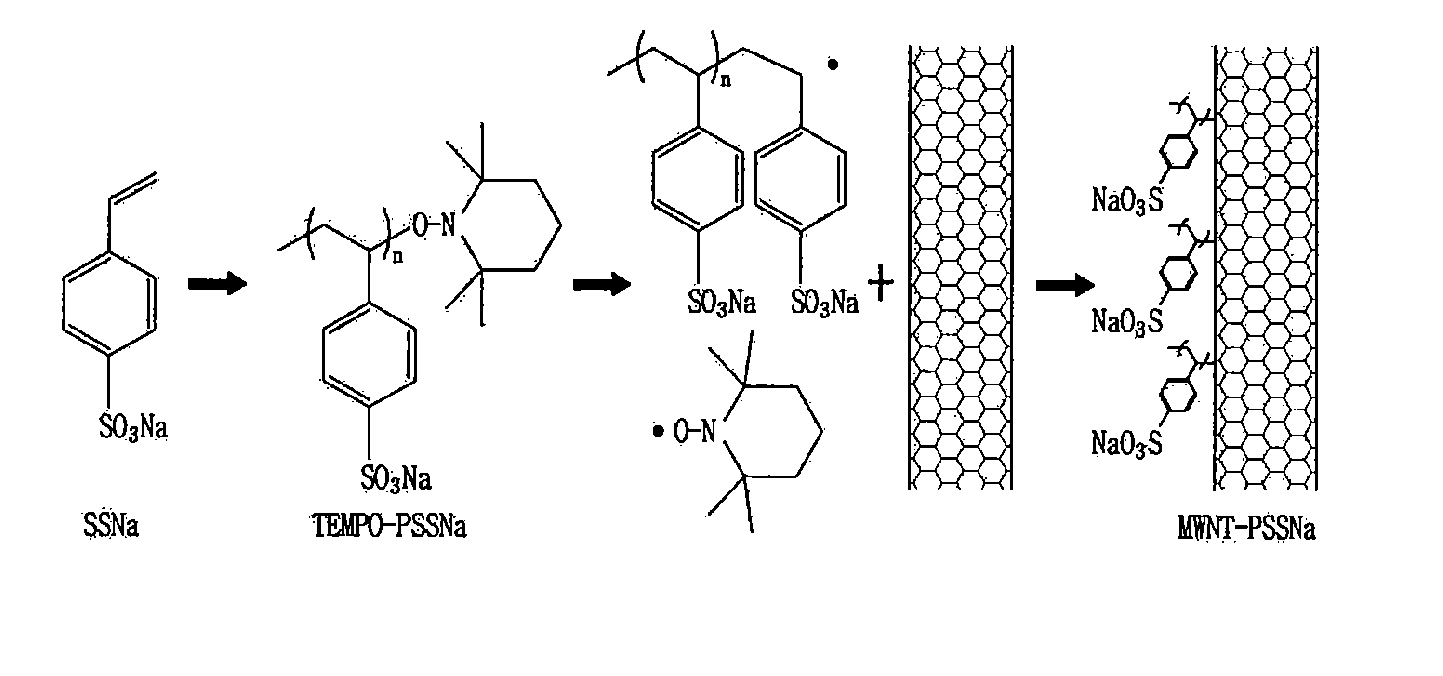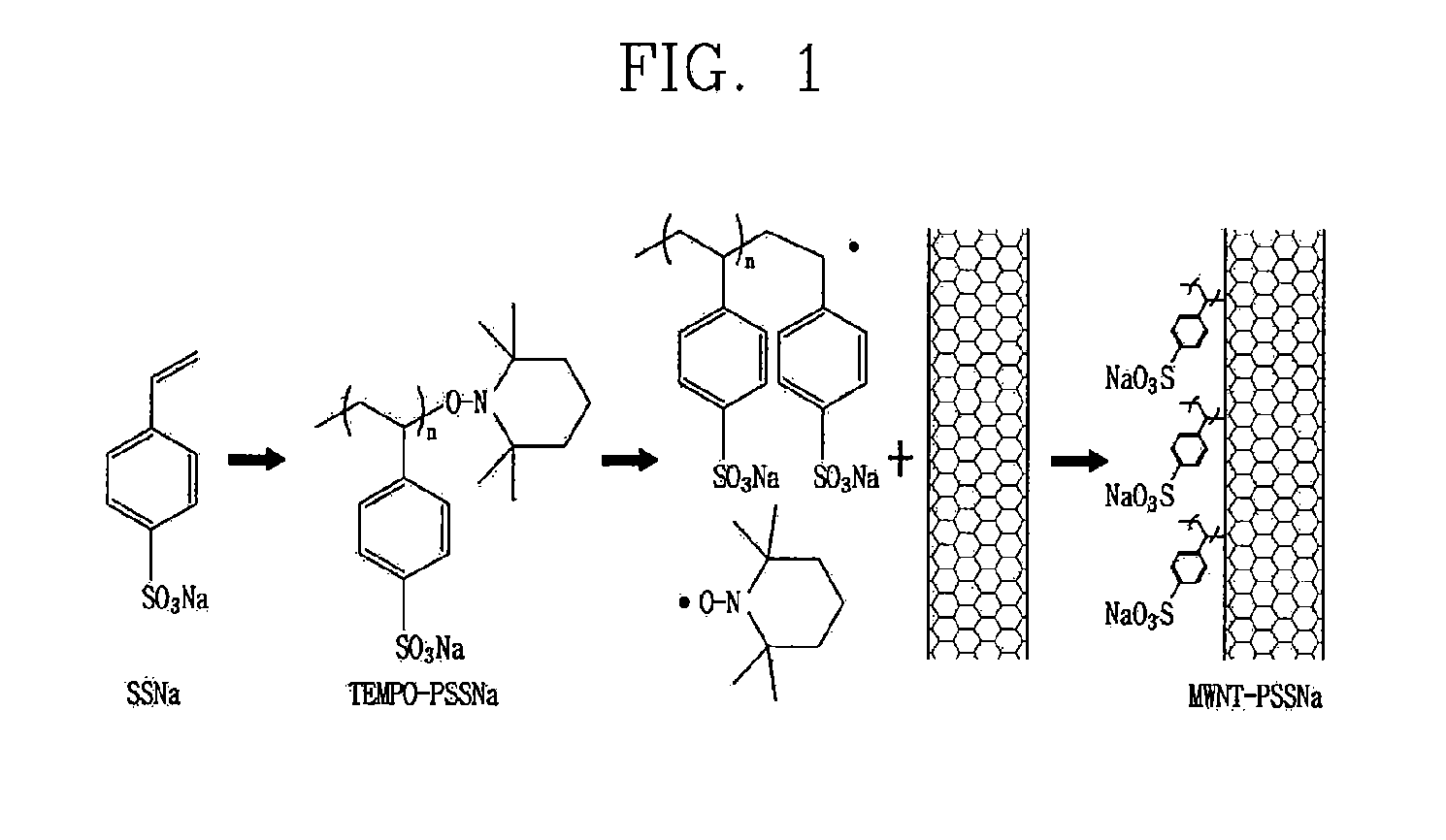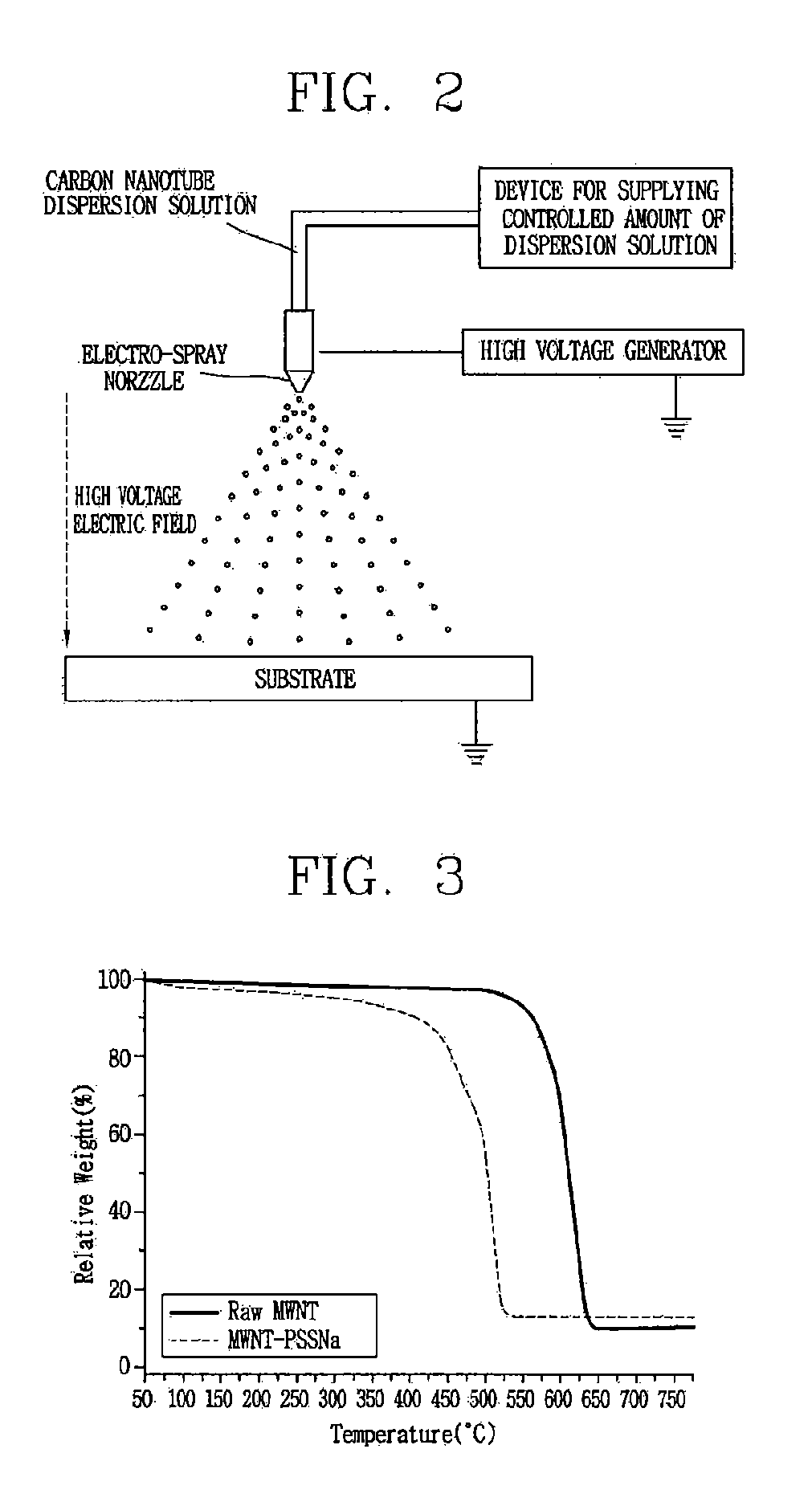Modified carbon nanotube grafted by living polymer, carbon nanotube electrode and dye-sensitized solar cell using the same, and each preparation method thereof
a carbon nanotube and living polymer technology, applied in the field of living polymer carbon nanotube grafting, carbon nanotube electrode and dye sensitization solar cell using the same, can solve the problems of platinum electrode degradation, platinum electrode is expensive, and platinum electrode has a long-term stability degradation, etc., to achieve the effect of enhancing the dispersibility of carbon nanotube, minimizing the physical property of carbon nanotube, and enhancing the dispersibility
- Summary
- Abstract
- Description
- Claims
- Application Information
AI Technical Summary
Benefits of technology
Problems solved by technology
Method used
Image
Examples
example 1
1-1 Synthesis of Polystyrenesulfonate Sodium Salt (PSSNa) Having a TEMPO End Group
[0082]40.0 g (194 mmol) of 4-styrenesulfonic acid sodium salt hydrate (SSNa) and 2.96 g (18.9 mmol) of TEMPO were dissolved in 200 mL of ethylene glycol. To the mixture solution, were slowly added a solution that 1.37 g (7.2 mmol) of Na2S2O5 was dissolved in 15 mL of distilled water, and a solution that 2.59 g (9.6 mmol) of K2S2O8 was dissolved in 45 mL of distilled water, at a temperature of 60° C. under a nitrogen atmosphere. Then, the resulting solution was stirred for one hour, thus to obtain PSSNa-TEMPO shown in FIG. 1. Next, a molecular weight of the PSSNa-TEMPO was measured by using water as an eluent and by using polystyrene having a standard molecular weight of polystyrene. As the result, obtained were a molecular weight (Mw) of 1020 and a molecular weight distribution (Mw / Mn) of 1.05.
1-2 (1) Synthesis of PSSNa-g-MWNT
[0083]20 mg of multi-walled carbon nanotubes (MWNT of Table 1) were added to ...
example 2
[0087]1.0% by weight of the MWNT-g-PSSNa synthesized in Example 1-2 was dispersed to a mixture solution between water and ethanol (1:1), respectively. Then, the MWNT-g-PSSNa dispersion solution was electro-sprayed on an FTO substrate by using the electro-spray device of FIG. 2, thereby forming carbon nanotube films having various thicknesses (Examples 2-1 to 2-7). And, a carbon nanotube film having a thickness of 1.65 μm was formed by using the MWNT-g-PSSNa synthesized in the Example 1-3 (Example 2-8). Here, a distance between the spray nozzle and the substrate was about 11 cm, and a voltage more than about 10 kV was applied to a space therebetween to prepare carbon nanotube electrodes. Some of the prepared carbon nanotube electrodes were thermally compressed with a pressure of 5.3 ton (5×5 cm) at a temperature of 150° C. for about 5 minutes. Then, each surface resistance of the prepared carbon nanotube electrodes was measured by a 4-point probe method, and the results were shown in...
example 3
[0089]The same method as the method in Example 2 was used, except that an insulating glass substrate or a plastic film was used instead of a conductive FTO substrate when electro-spraying the MWNT-g-PSSNa dispersion solution. A surface resistance of the carbon nanotube electrode having a carbon nanotube film having a thickness of about 8.4 μm was measured by a 4-point probe method. And, the measured result was shown in Table 2.
PUM
| Property | Measurement | Unit |
|---|---|---|
| thickness | aaaaa | aaaaa |
| water-soluble | aaaaa | aaaaa |
| organic soluble | aaaaa | aaaaa |
Abstract
Description
Claims
Application Information
 Login to View More
Login to View More - R&D
- Intellectual Property
- Life Sciences
- Materials
- Tech Scout
- Unparalleled Data Quality
- Higher Quality Content
- 60% Fewer Hallucinations
Browse by: Latest US Patents, China's latest patents, Technical Efficacy Thesaurus, Application Domain, Technology Topic, Popular Technical Reports.
© 2025 PatSnap. All rights reserved.Legal|Privacy policy|Modern Slavery Act Transparency Statement|Sitemap|About US| Contact US: help@patsnap.com



